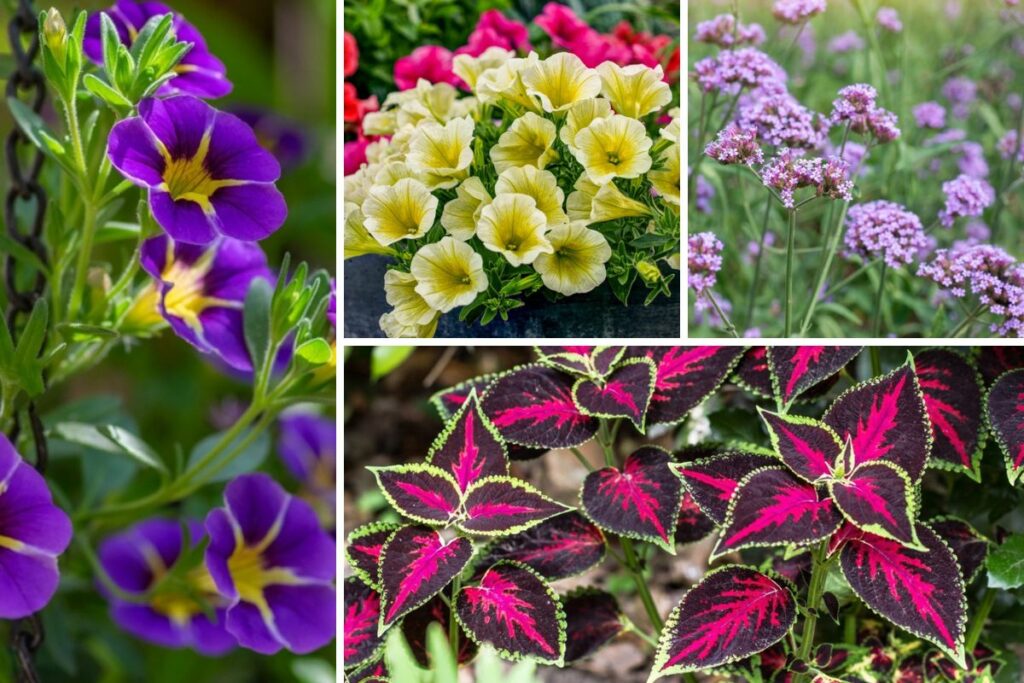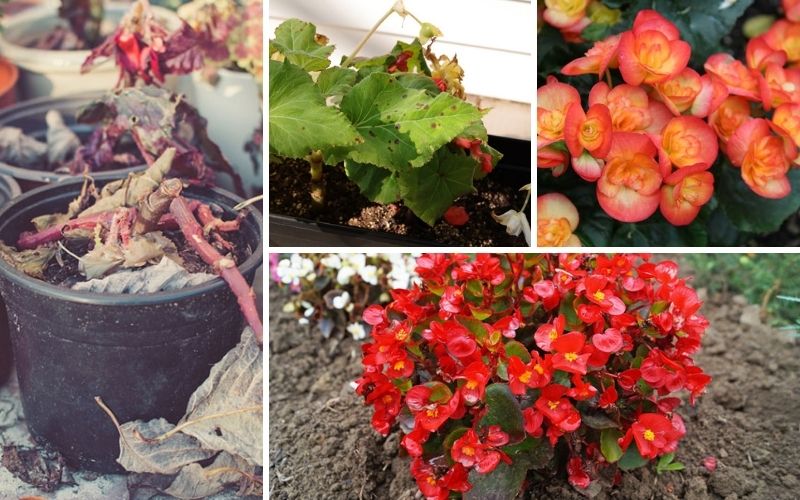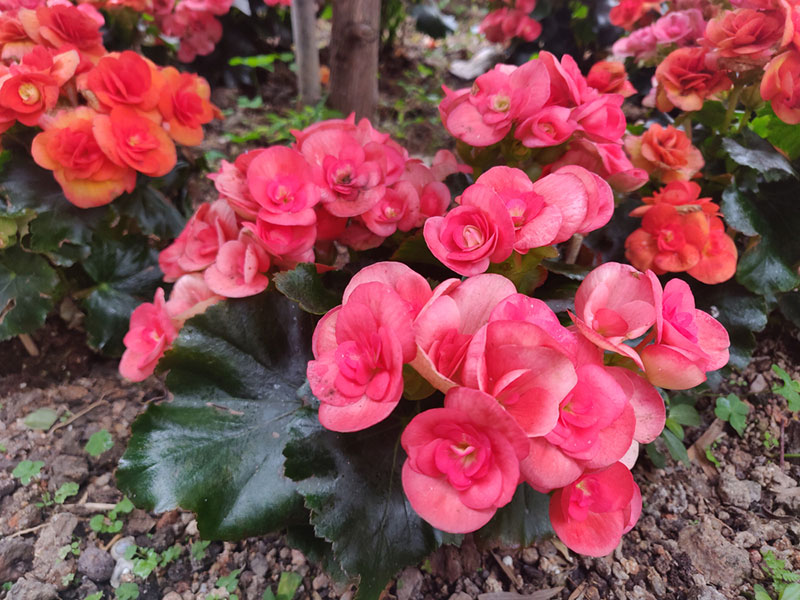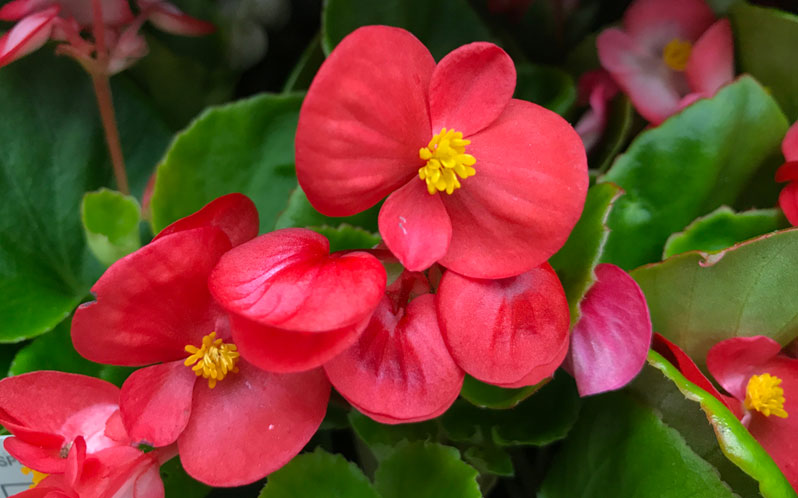Begonias are a plant that comes in a variety of colors, so you can easily get a begonia to match any décor in your garden. Most varieties do not need to be planted in direct sunlight to grow, so finding a place that gets shade for part of the day will be ideal. They typically bloom during the summer.

There are well over 1,000 different species of this plant that you can grow in your garden. Each variation of begonia is slightly unique, so you will need to care for each one differently.
Let’s take a look at some of the different types of Begonias that will look perfect in your garden.
Begonia Varieties
Wax Begonias
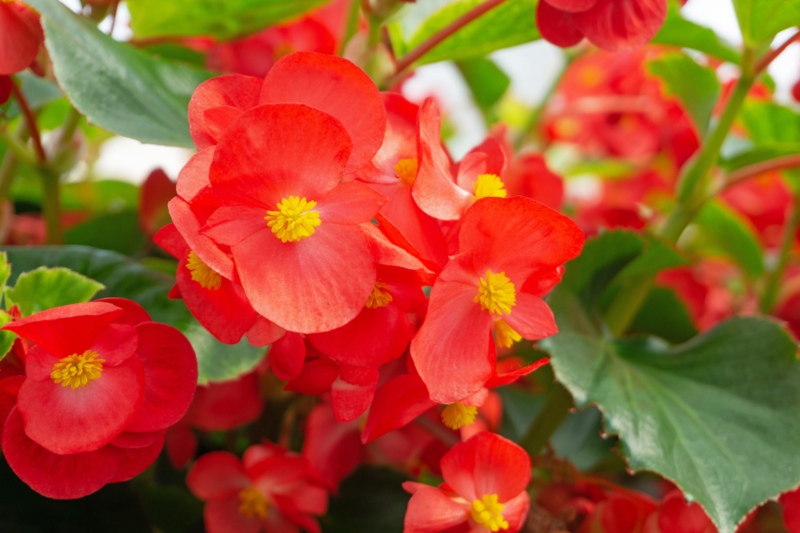
The wax begonia variation will thrive in zones 10 and 11 as perennial plants, but you can grow them indoors as well. They grow between six inches and two feet, and they have edible blooms that are red, pink, yellow, and white. It will grow in full sun with temperatures that are at least 60 degrees Fahrenheit and humidity that is above 50%. The soil needs to be moist but well-draining.
Boliviensis Begonias
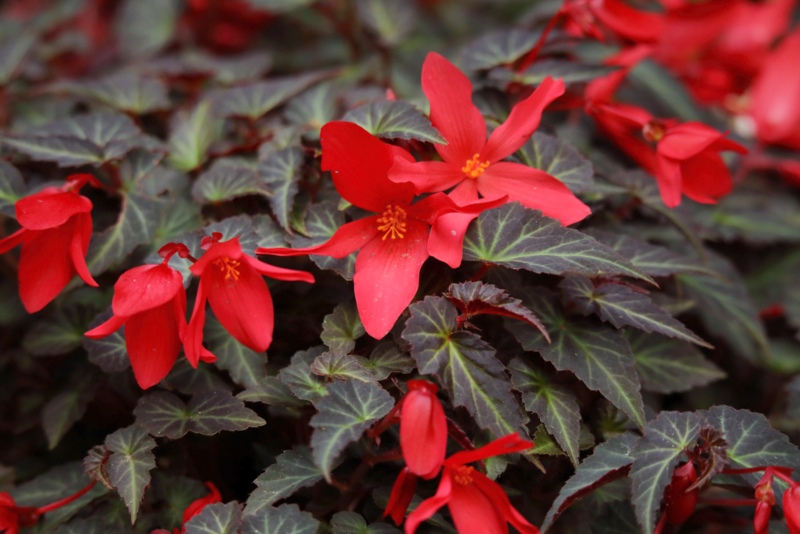
This type of begonia has blooms that are reddish-orange and foliage that has slightly pink edging. It blooms from late spring until the fall, and it does best in well-drained, fertile soil. It likes the heat and the humidity, but it prefers to grow in partial shade so that it is not in the direct sunlight. It also will not handle strong winds well.
Reiger Begonias
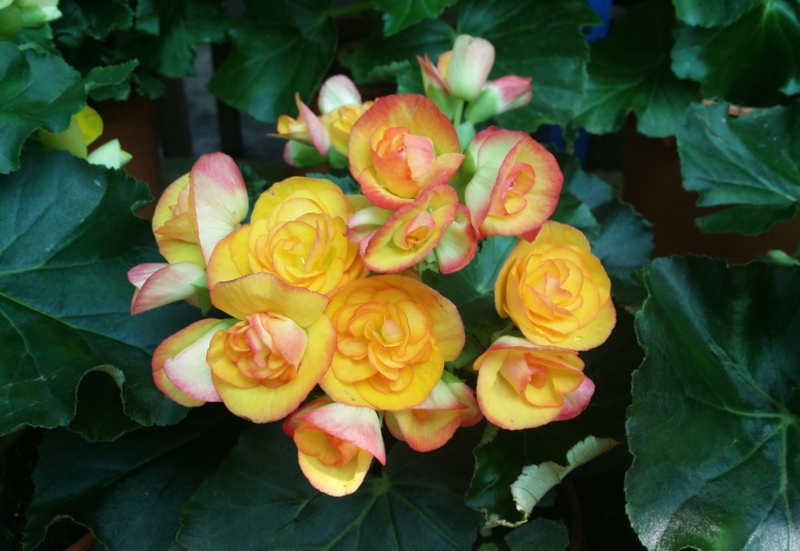
This variation will require short days and cool temperatures to bloom. It prefers partial sun and temperatures that are between 60 and 70 degrees Fahrenheit, even at night. Once this plant begins to bloom, the flowers can stick around for a period of six months or more. It also does best when it is planted in well-drained soil.
Rex Begonias
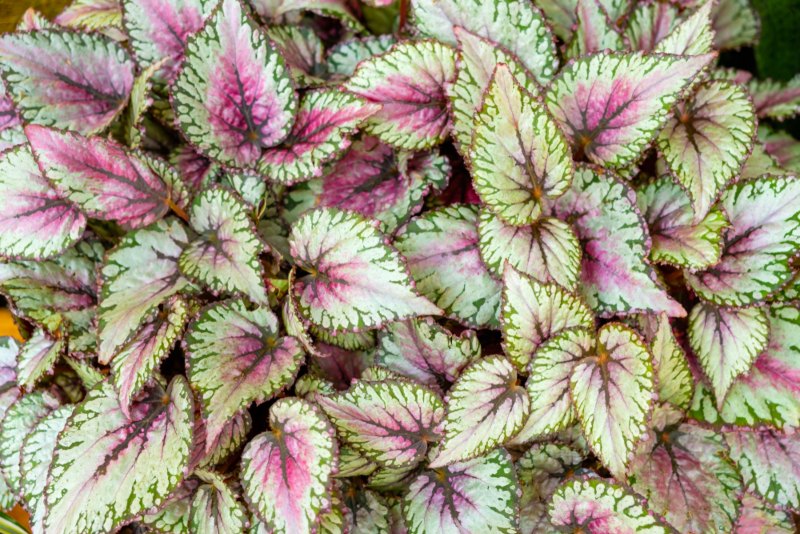
The rex begonia is a very stunning plant that has colorful leaves that can grow to be six inches in length. They require bright, non-direct sunlight to grow and soil that drains quickly. It likes warm and humid air, and it is not a plant that will tolerate cold temperatures, which means that it will go dormant when the temperature begins to drop.
Tuberous Begonias
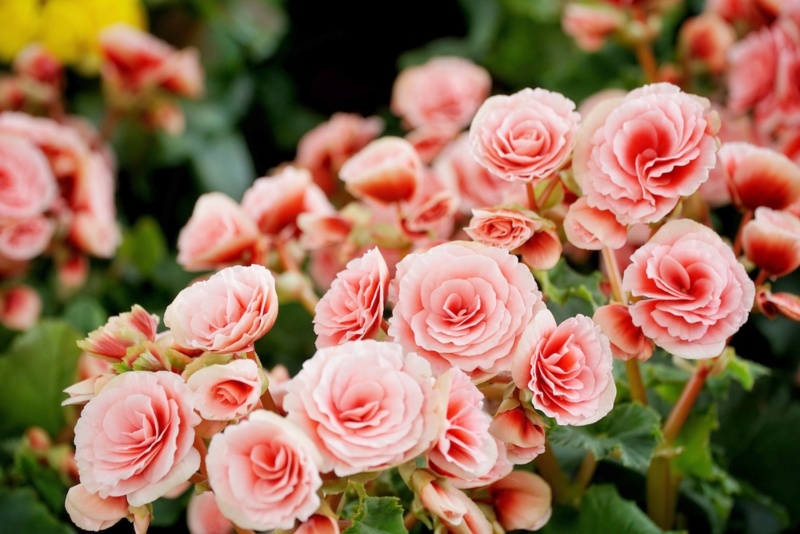
This variety is also cold-sensitive, so it will be seen growing in the warmer areas of the country, which are zones nine and 10. They will not survive the frost, so make sure that you bring them inside when it begins to get chilly at night. They need sunlight to bloom, but direct sunlight is not best. They also prefer to grow in well-drained soil.
Rhizomatous Begonias
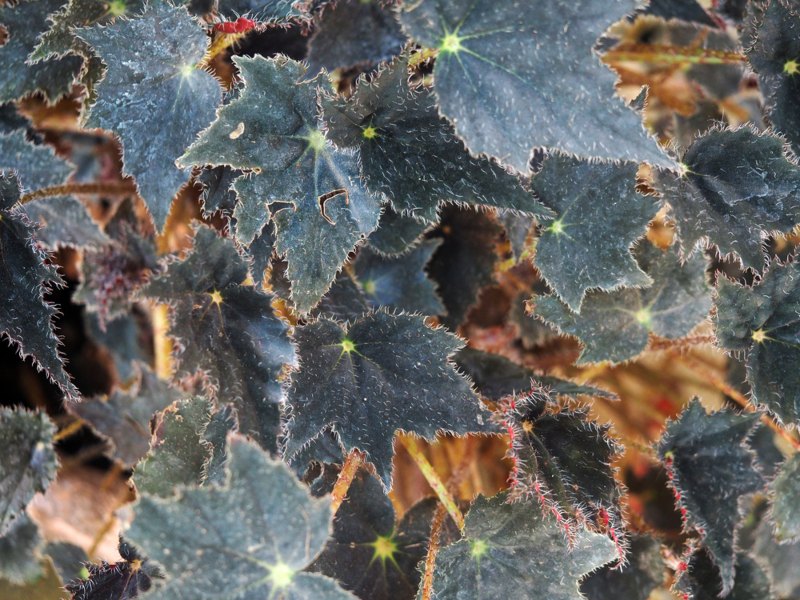
This is a plant that has unique leaves that will stand out in every way. They have a fuzzy texture and can range in color from pink and purple to yellow and green. They prefer to grow in well-drained soil that is rich in nutrients and indirect sunlight for the majority of the day.
Dragon Wing Begonias
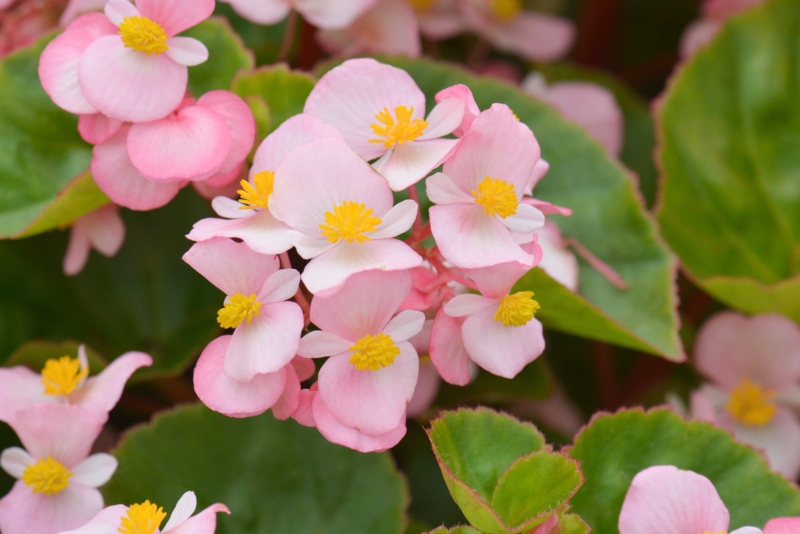
This is a begonia that has bright red blooms that will attract hummingbirds to your garden. It will require regular water when the soil is dry to the touch, and it prefers to grow in full shade to partial sun. It does not do great in high heat, so direct sunlight is not the best option for this plant.
Cane Begonias
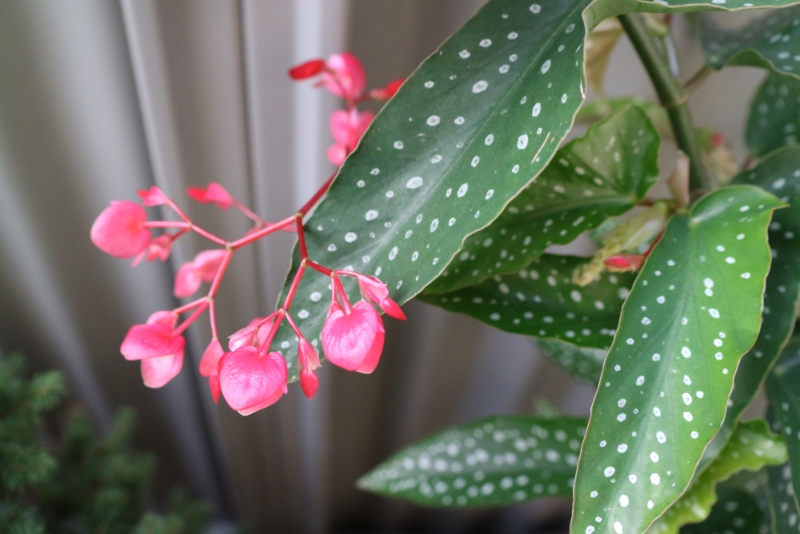
Cane begonias have joints on their stems that resemble bamboo. The flowers bloom from these joints and can be seen in clusters of pink, white, red, and orange. They like to grow in bright light, but not direct sun if it is hot. Rich soil is best, and pinching off the dead leaves will help promote growth.





